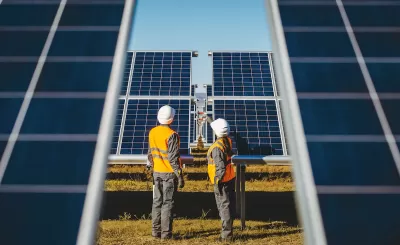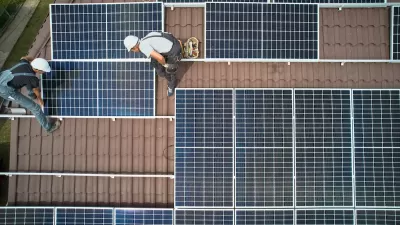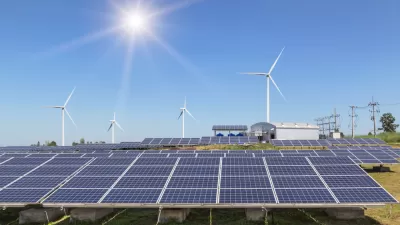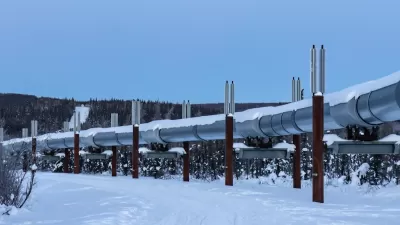The federal government announced a $20 billion investment to support low-interest loans for climate and clean energy projects.

A new ‘green bank’ network created by the Biden administration will provide low- or zero-interest loans to fund climate and clean energy projects, with a focus on historically underserved communities.
According to an article by Kristoffer Tigue in Inside Climate News, “Under the Environmental Protection Agency’s Greenhouse Gas Reduction Fund—also known as the country’s first national green bank—eight community development banks and nonprofit organizations will receive that federal funding to go toward rooftop solar installations, energy efficiency upgrades and other projects that help reduce greenhouse gas emissions.”
The program falls under the federal Justice40 initiative, which requires that 40 percent of benefits from certain federal programs go to disadvantaged communities. Carla Walker, director of environmental justice and equity for the World Resources Institute’s U.S. branch, calls the $20 billion investment “a crucial step toward addressing longstanding inequities and barriers to accessing much-needed capital for the communities that need it most.”
FULL STORY: White House Awards $20 Billion to Nation’s First ‘Green Bank’ Network

Trump Administration Could Effectively End Housing Voucher Program
Federal officials are eyeing major cuts to the Section 8 program that helps millions of low-income households pay rent.

Planetizen Federal Action Tracker
A weekly monitor of how Trump’s orders and actions are impacting planners and planning in America.

Ken Jennings Launches Transit Web Series
The Jeopardy champ wants you to ride public transit.

California Invests Additional $5M in Electric School Buses
The state wants to electrify all of its school bus fleets by 2035.

Austin Launches $2M Homelessness Prevention Fund
A new grant program from the city’s Homeless Strategy Office will fund rental assistance and supportive services.

Alabama School Forestry Initiative Brings Trees to Schoolyards
Trees can improve physical and mental health for students and commnity members.
Urban Design for Planners 1: Software Tools
This six-course series explores essential urban design concepts using open source software and equips planners with the tools they need to participate fully in the urban design process.
Planning for Universal Design
Learn the tools for implementing Universal Design in planning regulations.
Ada County Highway District
Clanton & Associates, Inc.
Jessamine County Fiscal Court
Institute for Housing and Urban Development Studies (IHS)
City of Grandview
Harvard GSD Executive Education
Toledo-Lucas County Plan Commissions
Salt Lake City
NYU Wagner Graduate School of Public Service





























